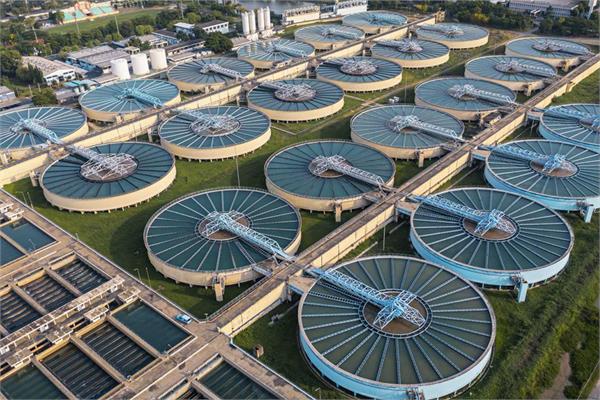
Researchers of the University of Sheffield are developing advanced water treatment techniques that could help in making our water resources more sustainable and meet United Nations' Sustainable Development Goals (UN SDG).
Research is currently underway at the University of Sheffield into advanced water treatment processes that are able to clean micropollutants more effectively than conventional water treatment methods, thus helping making our water resources more sustainable.
With demand for clean water rapidly increasing worldwide, it is of the utmost importance to ensure availability and sustainable management of water and sanitation for all. Yet, 2.2 billion people still have no access to safe drinking water, and a further 844 million people lack even a basic water service. Adding to this, pressures from the demand for fresh water means we rapidly need to find more effective ways to reuse the water we have.
This is why researchers from the University of Sheffield are investigating ways to effectively remove micropollutants found in surface, ground and drinking water, which can cause long-term, severe effects on the environment and human health. Micropollutants are synthetic or man-made in nature and include chemicals from things like prescription medications such as antibiotics, painkillers and hormones, personal care products and toiletries, industrial chemicals, pesticides and herbicides used in farming and many more.
The research highlighted in particular how photocatalytic water treatment could help more effectively eliminate micropollutants from our water resources.
Conventional water treatment technologies, such as filtration, sedimentation, and coagulation/precipitation and biological treatment techniques do not achieve complete degradation of all harmful pollutants, and often have to be used in combination to achieve a high standard of water quality. They also usually come with issues such as how to dispose of toxic by-products of the cleaning process.
Photocatalytic water treatments, a type of advanced oxidation processes (AOP) triggered by a light source, can attack and break down nonbiodegradable and chemical micropollutants into less complex and less toxic or nontoxic compounds. This process could be highly efficient and can work on multiple micropollutants at the same time.
“Wastewater is treated by conventional wastewater treatment plants (WWTPs) before being put back into water bodies, but this existing technology cannot completely remove micropollutants, which have even been found supplies from water supplied by drinking water treatment plants, which can also be fed by WWTPs. Over time these micropollutants, due to their resistance to degradation processes, can accumulate in water and have potential consequences such as acute and chronic toxicity and hormonal disruptions for marine life, the environment and humans”, explains Manasi R. Mulay, co-author of the review from the University of Sheffield’s Grantham Centre for Sustainable Futures.
“Using AOPs, micro-pollutants can be broken down into simple compounds such as water and carbon dioxide, with the use of photocatalysts. TiO2 (titanium dioxide) based photocatalysis is one of the most promising AOPs being developed, as it offers high efficiency and chemical stability over re-uses in destroying persistent pollutants in water”, continues Mulay. “Interesting fact is - though titanium dioxide based photocatalysis has been known since 1972 as the ‘Honda-Fujishima effect’, its development needs to be revisited from an efficient water treatment perspective, with customised treatment for pollutants that exhibit high resistance to degradation”.
“Combining benefits of different advanced water treatment techniques could be promising to help achieve the UN’s goal of clean and sustainable water for all by 2030, however at the moment many AOPs are still labour intensive and cost-prohibitive”, adds Dr Natalia Martsinovich from the Department of Chemistry, who co-authored the review.
This is why researchers call for more resources for urgent investment into advanced water treatments, along with policies that monitor the release of pollutants and encourage reuse of clean wastewater.
“We urgently need more resources invested in the research, development, and implementation of advanced wastewater treatment technologies. Along with clear policies that monitor the release of pollutants to the environment, regulate the purification treatment of wastewater and encourage reuse of clean wastewater”, says Martsinovich. “Only with the support of nations around the world with willingness to protect the natural water resources and provide clean water access to all, can we reap the benefits of advanced water treatment technologies to work towards the Sustainable Development Goal set by the UN.”